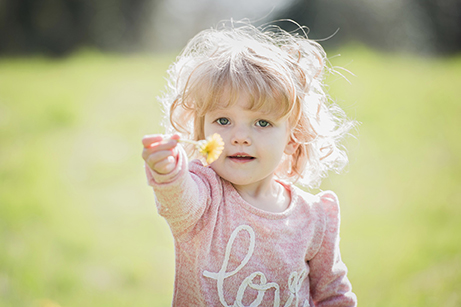Spring Scavenger Hunt


Scavenger hunts are a favorite activity of ours to do with children in Occupational Therapy sessions. There are so many skills that can be incorporated into a scavenger hunt: visual skills, executive functioning, ideation, motor planning, sensory exploration, and even more! Practicing these skills in a fun way is especially helpful for neurodiverse individuals, such as those with autism, ADHD, down syndrome, and sensory processing disorders. Now that the weather is getting nicer, take your child outside to do a spring scavenger hunt! Below are some ideas to get you started in creating your own scavenger hunt, as well as a sample scavenger hunt checklist.
- Visual skills: choose items at varying levels and at varying visibility. For example, don’t have your child look for all the scavenger hunt items at ground level, add in items that are above their heads, on the walls, hidden among flowerbeds, or obscured by other objects. Searching for items in a wide variety of locations allows your child to practice their visual scanning skills and even offers an opportunity to practice preposition words (“the rock is under the bush; the flower is behind the tree”).
- Executive Functioning: scavenger hunts are great ways to practice things like sequencing and organization. Your child can help you create the scavenger hunt checklist, which challenges their ideation and organization abilities. Help them identify items that are feasible to find in your environment (but not too easy to find!) Additionally, going through the routine of reading the next item on the checklist, finding it, and crossing it off the list helps with sequencing skills, as well as organization.
- Sensory Exploration: include items on your checklist that tap into your child’s other senses (besides vision). For example, have your child look for items that feel, sound, or smell a certain way! Including these items can be a safe and fun way for a child to be in control while exploring their sensory environment and investigating new textures, sounds, and smells. It also helps children learn to discriminate between qualities like soft and rough, dry and wet, hot and cold, etc.
- Motor Planning/Motor Skills: a fun twist that can be added to any scavenger hunt is a movement component. Including movement challenges your child’s gross and fine motor skills, motor planning skills, and attention. Include things like “jump over a puddle” or “high five a tree.” Your child will enjoy moving their body and being silly while interacting with their environment!

Eyas Landing is a therapy clinic with a mission to provide evidence-based and family-centered therapy services for children, adolescents, and their families. The primary goal is to deliver relationship-based interventions within the most natural environments and to empower families to reach their full potential. To achieve this goal, our highly educated, compassionate staff dedicates time and expertise to create experiences that maximize therapeutic outcomes. The strength, determination, and perseverance of our clients are evident as they succeed in therapy, and ultimately in their daily lives.
Eyas Landing offers a wide range of comprehensive services including Speech Therapy, Occupational Therapy, Physical Therapy, ABA Therapy, Social Work, Family Therapy, and Neuropsych testing. Services are provided throughout the Chicagoland area via Telehealth, In-Home, and in our state of the art clinic.
Want to learn more or you have a specific question? Feel free to connect with us here!


